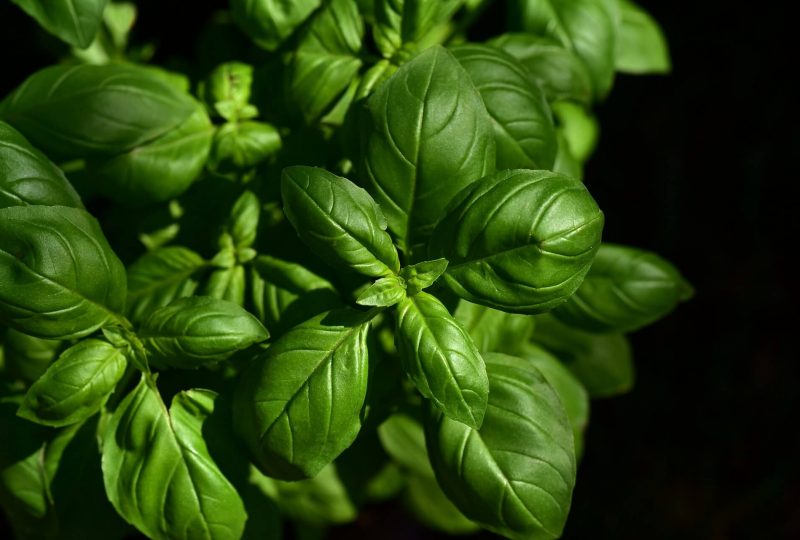Agriculture can be “Intelligent”
10 April 2019 | Written by La redazione
From the countryside to the cities, agriculture is becoming increasingly digital

Researchers from the Open Agriculture Initiative of the MIT Media Lab in Boston have created, thanks to computer algorithms, the optimal conditions for the cultivation of the most tasty basil in the world. To obtain the desired result, the plants needed an exposure to light 24 hours a day, a factor that would not have been discovered with traditional techniques. This is only the last example of how agriculture, a sector that has a past of 10,000 years, is able to evolve even today, in search of the best result.
Research. “We could not have discovered it in any other way. Unless you are in Antarctica, there is no 24-hour photoperiod (the duration of the daily illumination period) to be tested in the real world – says John de la Parra, head of research for the OpenAg group and author of the study – We had to have artificial circumstances to find out. ” The MIT team, in fact, cultivated basil plants in containers with different climatic conditions, called “food computers”, which were able to detect the different needs of the aromatic herb, adjusting its exposure to ultraviolet light. At the conclusion of the study, published in the journal Plos One, the concentration of the volatile compounds of the leaves was measured, elements that indicate the intensity of the flavor of a food: the outcome was the most delicious basil ever tasted.
The importance of data. The data obtained were inserted into automatic learning algorithms, so as to replicate the result achieved. This type of agriculture is nothing new, in Japan a company that uses artificial intelligence for plant production has already been present for some years, even if many failed attempts have been made. The main problem is the lack of information dissemination. MIT tries to overcome this obstacle by sharing its research and making available to all hardware, software and useful data. The MIT team has also made small personal computers for food available to students in the United States. containers used for growing plants under controlled conditions and sending the results directly to MIT: a way to train young people and keep the results monitored. In addition to taste. The result of this research could also favor an application in medicine. By raising the levels of some basil compounds, in fact, one could think of the use of this plant for treating some diseases such as diabetes. From ancient times aromatic herbs have been used in medicine. Today, relying on artificial intelligence, it is possible to “enhance” the beneficial effects of these plants thanks to the simple adaptation of the environmental conditions, temperature, humidity and color of the light beyond the duration of the exposure. This approach demonstrates how technological innovation and research can help agriculture in a natural way, without resorting to genetic modification of crops. An idea of digital agriculture that changes the environmental conditions in which plants are grown, without the addition of chemical components.
Vertical Indoor Farming. In these years we are witnessing a slow but steady abandonment of the campaigns in favor of urban centers, consequently the problem has been posed of where to cultivate the products of the earth. The answer could be the Vertical Indoor Farming, with the help of some technologies such as artificial intelligence, sensors and software. There are many startups that have decided to focus on this sector, one of which is Hexagro Urban Farming, co-founded by Alessandro Grampa, which on our magazine explained to us how all their products are a piece of IoT. “Connected to the Internet and” settable “through mobile applications or websites, based on what we are going to cultivate. “To talk about a real artificial intelligence – he told us – it is still early, we still have to create a sufficient database of data. After the big data collection and the deep learning work, however, we will be able to speak for all intents and purposes of an artificial intelligence system. Through the sensors we are taking the data we need to understand how to improve performance and adapt cultivation programs. We started with the data offered by nature and agriculture, tradition and gradually, thanks to the first operational products and the data collected, we are going to implement the system, without having to replace components but making updates. ”
Biology and medicine yes they are merging with technology to develop new agricultural possibilities, but in what direction are we going? How will it affect our health? Could this be the right reaction to save agriculture from climate change?
Researchers from the Open Agriculture Initiative of the MIT Media Lab in Boston have created, thanks to computer algorithms, the optimal conditions for the cultivation of the most tasty basil in the world. To obtain the desired result, the plants needed an exposure to light 24 hours a day, a factor that would not have been discovered with traditional techniques. This is only the last example of how agriculture, a sector that has a past of 10,000 years, is able to evolve even today, in search of the best result.
Research. “We could not have discovered it in any other way. Unless you are in Antarctica, there is no 24-hour photoperiod (the duration of the daily illumination period) to be tested in the real world – says John de la Parra, head of research for the OpenAg group and author of the study – We had to have artificial circumstances to find out. ” The MIT team, in fact, cultivated basil plants in containers with different climatic conditions, called “food computers”, which were able to detect the different needs of the aromatic herb, adjusting its exposure to ultraviolet light. At the conclusion of the study, published in the journal Plos One, the concentration of the volatile compounds of the leaves was measured, elements that indicate the intensity of the flavor of a food: the outcome was the most delicious basil ever tasted.
The importance of data. The data obtained were inserted into automatic learning algorithms, so as to replicate the result achieved. This type of agriculture is nothing new, in Japan a company that uses artificial intelligence for plant production has already been present for some years, even if many failed attempts have been made. The main problem is the lack of information dissemination. MIT tries to overcome this obstacle by sharing its research and making available to all hardware, software and useful data. The MIT team has also made small personal computers for food available to students in the United States. containers used for growing plants under controlled conditions and sending the results directly to MIT: a way to train young people and keep the results monitored. In addition to taste. The result of this research could also favor an application in medicine. By raising the levels of some basil compounds, in fact, one could think of the use of this plant for treating some diseases such as diabetes. From ancient times aromatic herbs have been used in medicine. Today, relying on artificial intelligence, it is possible to “enhance” the beneficial effects of these plants thanks to the simple adaptation of the environmental conditions, temperature, humidity and color of the light beyond the duration of the exposure. This approach demonstrates how technological innovation and research can help agriculture in a natural way, without resorting to genetic modification of crops. An idea of digital agriculture that changes the environmental conditions in which plants are grown, without the addition of chemical components.
Vertical Indoor Farming. In these years we are witnessing a slow but steady abandonment of the campaigns in favor of urban centers, consequently the problem has been posed of where to cultivate the products of the earth. The answer could be the Vertical Indoor Farming, with the help of some technologies such as artificial intelligence, sensors and software. There are many startups that have decided to focus on this sector, one of which is Hexagro Urban Farming, co-founded by Alessandro Grampa, which on our magazine explained to us how all their products are a piece of IoT. “Connected to the Internet and” settable “through mobile applications or websites, based on what we are going to cultivate. “To talk about a real artificial intelligence – he told us – it is still early, we still have to create a sufficient database of data. After the big data collection and the deep learning work, however, we will be able to speak for all intents and purposes of an artificial intelligence system. Through the sensors we are taking the data we need to understand how to improve performance and adapt cultivation programs. We started with the data offered by nature and agriculture, tradition and gradually, thanks to the first operational products and the data collected, we are going to implement the system, without having to replace components but making updates. ”
Biology and medicine are merging with technology to develop new agricultural possibilities, but in what direction are we going? How will it affect our health? Could this be the right reaction to save agriculture from climate change?





